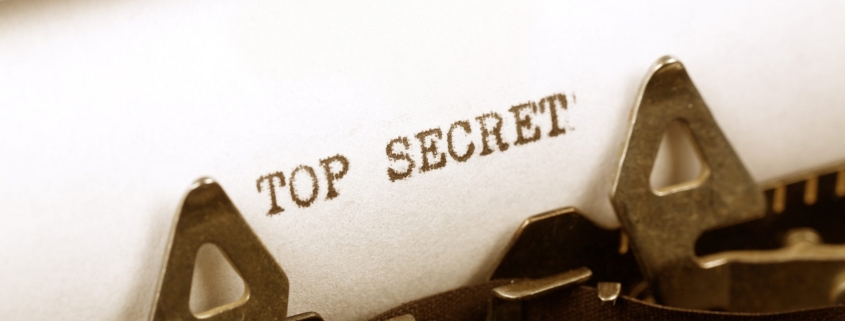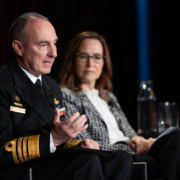Life after D-notices: Australia can learn from Britain’s updated system
For decades, Britain and Australia had much the same process for regulating media handling of defence secrets. It was the D-notice system, under which media would be asked not to publish.
The two countries diverged when, around 1982, Australia’s much-maligned D-notice system fell into disuse. Britain kept but progressively overhauled its framework, eventually creating the Defence and Security Media Advisory (DSMA) system in 2015.
Something like Britain’s DSMA system could have significant benefits for Australian government and media and has been recommended by, for instance, the Independent National Security Legislation Monitor. Although the present monitor, Jake Blight, assesses that Australian government and media don’t trust each other enough to make it work.
A successful Australian system would require deliberate steps to build the trust which underpins the British system. But this could be achievable through: careful appointments, a media-led approach (including a media-majority committee), a clear separation from national security laws, and ongoing engagement between the press and national security agencies.
A healthy tension between government and the media is fundamental to democracy, ensuring transparency while holding power to account. In national security, however, this balance is particularly delicate—too much disclosure can compromise capabilities and lives, while excessive secrecy risks unchecked power, eroding public trust and democratic oversight. Balance is essential to safeguard national security and maintain confidence in the institutions that protect it.
A structured space for dialogue between government and media could help balance openness and security by allowing the government to convey national security concerns and ensuring the media’s editorial independence.
Today in Britain, the DSMA Committee oversees a voluntary system centred on five standing DSMA-notices covering military operations, weapons systems, military and intelligence techniques, physical property and assets, and personnel (and their families) who work in sensitive positions.
Each notice sets out why inadvertent disclosure of certain information should be prevented and requests that editors and journalists seek advice from the DSMA secretary before publicly disclosing related material. The DSMA Committee meets twice a year (and other times as necessary) to consider these notices, the system as a whole and requests for advice.
The DSMA Secretariat comprises Secretary Brigadier (Retired) Geoffrey Dodds, assisted by Deputy Secretaries Captain (Retired) Jon Perkins and Lieutenant Commander (Retired) Stephen Dudley. The wider committee includes senior officials from the Home Office, Ministry of Defence, Foreign Office and Cabinet Office on the government side.
Balancing this, 20 senior media representatives—including chief editors from major print and digital outlets—ensure broad industry engagement and representation. The committee operates at the intersection of national security and press freedom: it is chaired by the Ministry of Defence’s director general of security policy, supported by ITN’s head of compliance as vice-chair.
In contrast to the now defunct D-notice approach, the DSMA system is widely regarded in a positive light by, remarkably, both media and government actors. It holds significant promise for Australia, which could learn four key lessons from Britain.
First, the secretary must have full security access and extensive experience and must earn the trust and backing of media representatives. This is an important but challenging requirement. The appointment of trusted individuals shifts the focus away from the unrealistic goal of full institutional trust and instead ensures credibility through the reputation and independence of key personnel.
Second, the committee must be media-led. It consists of a strong majority of respected industry professionals who uphold press freedom, public interest and expertise in media practices.
Third, the DSMA system must remain advisory. It operates within the editorial sphere to balance national security and public access to information, free from legal enforcement or censorship. Clear separation between the system and national security laws prevents legal entanglements and ensures the process remains advisory rather than regulatory, let alone investigative or prosecutorial.
Finally, the system must be genuinely voluntary. An editor or journalist can choose to ignore DSMA advice. Trust will develop in practice rather than existing as a prerequisite through education and ongoing engagement between media and security officials.
Altogether, the idea of ‘slapping a D-notice’ on something as a form of censorship does not apply. The committee’s media-led nature means the secretariat draws insights from leading editors and media players in formulating its advice, which carries the weight of those actors as well as the secretariat itself.
Ultimately, the DSMA system’s relative success lies in trust, respect and shared interests. At their core, media and government serve the public interest. Neither is interested in unethical (or even sloppy) journalism. Both pursue the well-being and security of the nation and its people.
What can emerge from the DSMA system are negotiated outcomes in which crucial parts of a story can be told (from a journalist’s perspective) without disclosing truly problematic information (from a security standpoint). That discussion must be had from a position of mutual trust and respect.
This article has been corrected to say that the Australian D-notice system fell into disuse around 1982 and to correctly state the title ‘Independent National Security Legislation Monitor’.





